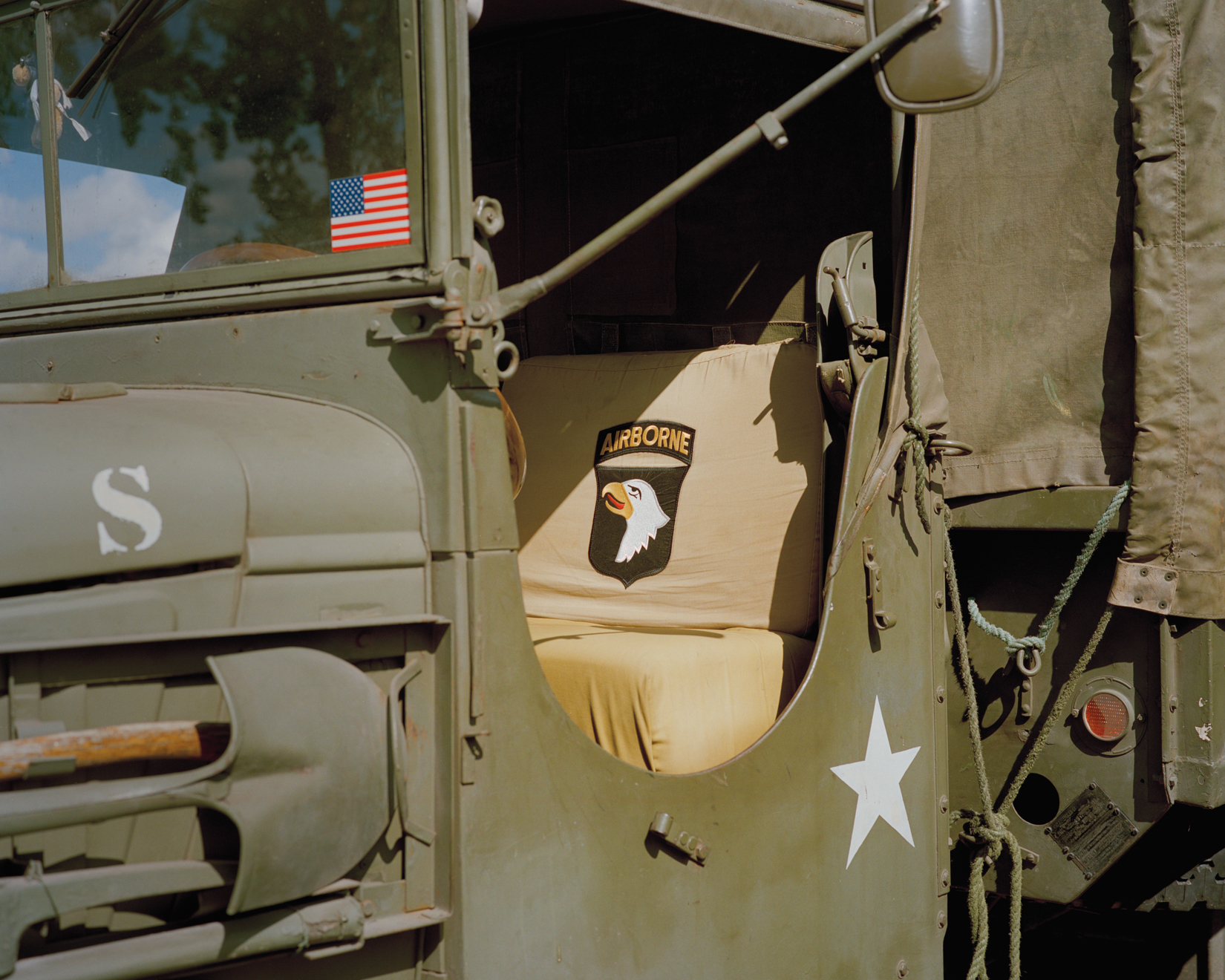Based on True Events
Arne Piepke


























My work Based on True Events documents war reenactments in Europe to question our understanding of historical wars and to confront the viewer with the paradoxical aesthetics of war.
It raises questions about how history is created and accessed, and what aspects of it may be forgotten or repressed.
I visited reenactments of the Napoleonic Wars of Liberation, the American Civil War, and World War I and II, in Belgium, France and Germany. While some of these events are performed in front of an audience, others take place on private property and are closed off from the outside world. Often there are strict rules, military ranks and procedures that must be followed. Not only the clothing must be authentic, but also the food and shelter.
Many of the reenactors have a strong knowledge of details, own original parts, partly tailor their clothes themselves or buy them from one of the few authentic tailors.
Their motivations vary enormously, from historical interest, trying to get close to the experiences of grandfathers to better understand them, weapons and war enthusiasm, collectors, to a glorified perception of war and camaraderie.
Many participate in combat reenactments, while some reject this and focus on displaying accurate uniforms and the daily life of soldiers. They want to share their knowledge and make it accessible so that knowledge about historical wars is not lost. For some, war reenactment even becomes an obsession.
With each of these reenactments, the true events behind them, are constantly reinterpreted and thus run the risk of being altered. Reenactments are always a kind of perfect warfare that cannot represent death, displacement and trauma.
Through my photography, I underscore the over-aestheticization of these performances in order to evoke the tension between truth and fiction. Due to their perfection, the reenactments expose themselves.
The question arises, which understanding of war is conveyed here, and in which way, we want to remember these wars.
As a German, seeing someone in a German Wehrmacht uniform for the first time was a strange feeling. I often thought of my great-grandfather, who had to serve in both World Wars. One of the reenactments took place on a former World War I battlefield. I have a letter from my great-grandfather, which he sent during his time in the First World War. The location on the letter is right next to the battlefield where I was to photograph a reenactment over a hundred years later. This gave me a feeling which I could hardly describe, a mixture of closeness and distance. The more I thought about the history of my great-grandfather and the horrors he must have experienced, the more distant and alien I felt in these situations.
It raises questions about how history is created and accessed, and what aspects of it may be forgotten or repressed.
I visited reenactments of the Napoleonic Wars of Liberation, the American Civil War, and World War I and II, in Belgium, France and Germany. While some of these events are performed in front of an audience, others take place on private property and are closed off from the outside world. Often there are strict rules, military ranks and procedures that must be followed. Not only the clothing must be authentic, but also the food and shelter.
Many of the reenactors have a strong knowledge of details, own original parts, partly tailor their clothes themselves or buy them from one of the few authentic tailors.
Their motivations vary enormously, from historical interest, trying to get close to the experiences of grandfathers to better understand them, weapons and war enthusiasm, collectors, to a glorified perception of war and camaraderie.
Many participate in combat reenactments, while some reject this and focus on displaying accurate uniforms and the daily life of soldiers. They want to share their knowledge and make it accessible so that knowledge about historical wars is not lost. For some, war reenactment even becomes an obsession.
With each of these reenactments, the true events behind them, are constantly reinterpreted and thus run the risk of being altered. Reenactments are always a kind of perfect warfare that cannot represent death, displacement and trauma.
Through my photography, I underscore the over-aestheticization of these performances in order to evoke the tension between truth and fiction. Due to their perfection, the reenactments expose themselves.
The question arises, which understanding of war is conveyed here, and in which way, we want to remember these wars.
As a German, seeing someone in a German Wehrmacht uniform for the first time was a strange feeling. I often thought of my great-grandfather, who had to serve in both World Wars. One of the reenactments took place on a former World War I battlefield. I have a letter from my great-grandfather, which he sent during his time in the First World War. The location on the letter is right next to the battlefield where I was to photograph a reenactment over a hundred years later. This gave me a feeling which I could hardly describe, a mixture of closeness and distance. The more I thought about the history of my great-grandfather and the horrors he must have experienced, the more distant and alien I felt in these situations.
